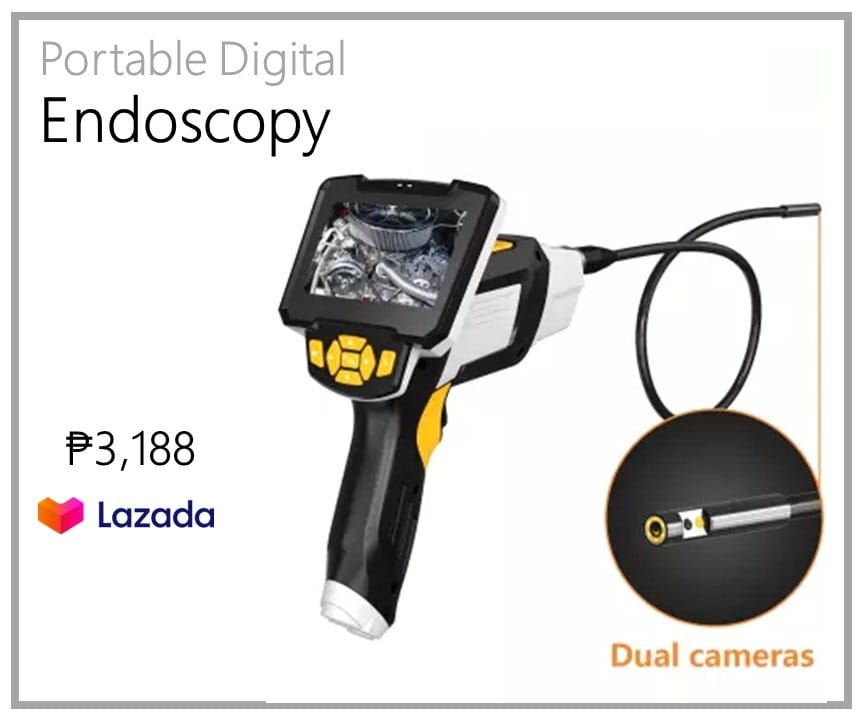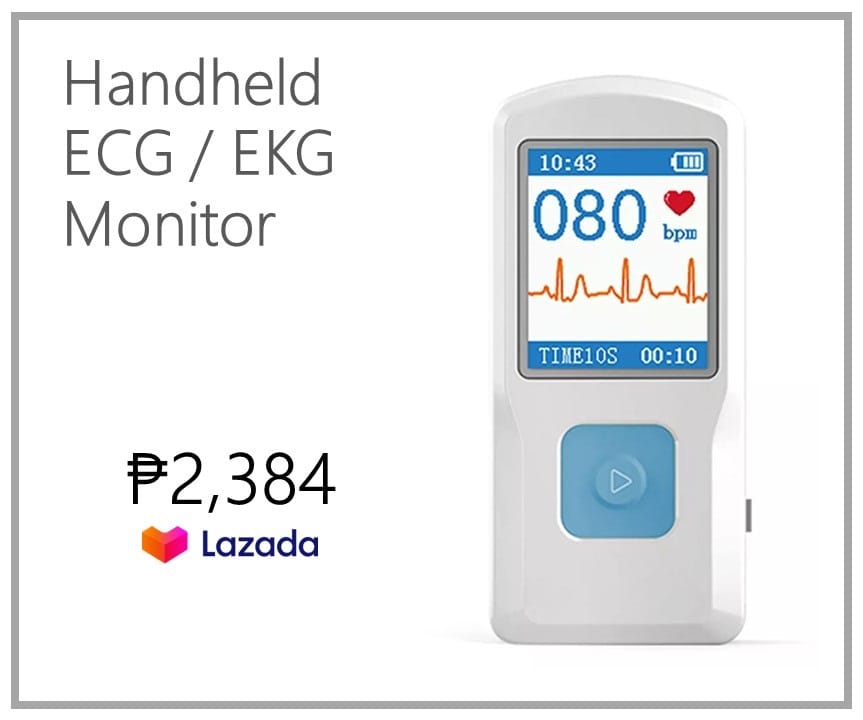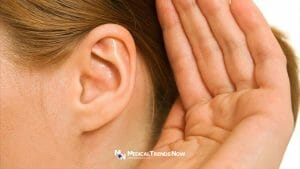Table of Contents
Asthma is a chronic inflammatory disease of the airways that affects millions worldwide. In the Philippines, asthma is one of the leading causes of hospitalizations and disability among Filipino children. As such, it is important to know about treatments for asthma to manage this condition better. This article serves as an ultimate guide to treatments for asthma in the Philippines, providing a comprehensive overview of currently available medications and other therapies.
Cases of Asthma in the Philippines
One in 10 Filipinos suffers from asthma, and most of them continue to suffer without access to proper treatments. According to the Rizal Medical Center, Department of Health, approximately 11 million Filipino adults and children have asthma, yet 98 percent of those afflicted do not get proper treatment. This is an alarming statistic considering that asthma can be managed through simple treatments and lifestyle changes.
Poverty is the primary cause of the lack of access to proper asthma treatments in the Philippines. Many families in poverty don’t have the financial resources or insurance coverage necessary for medication and doctor visits to manage the condition. In addition, there may be a lack of awareness about available treatments or language barriers, making it difficult for patients to ask for help or understand their medical information.
![PULMODUAL Ipratropium + Salbutamol 2.5mg Solution for Inhalation 2.5mL [PRESCRIPTION REQUIRED] Watsons Pharmacy](https://e52hyu4yuyt.exactdn.com/wp-content/uploads/2023/01/PULMODUAL-Ipratropium-Salbutamol-2.5mg-Solution-for-Inhalation-2.5mL-PRESCRIPTION-REQUIRED-Watsons-Pharmacy-300x230.jpg?strip=all&lossy=1&ssl=1)
What Is Asthma?
Asthma is a disease of the airways that affects millions of Filipinos (adults and children). It is caused by a combination of environmental and genetic factors. Asthma symptoms can include shortness of breath, wheezing, coughing, chest tightness, and difficulty breathing.
Asthma might be a minor inconvenience for some people. Others may find it to be a significant issue that interferes with everyday activities and could trigger a potentially fatal asthma attack.
Asthma Attack
Coughing, chest pain, wheezing, and breathing difficulties can all be symptoms of an asthma attack. Your body’s airways—the passages that take air to your lungs—are the site of the attack. Like how a tree’s branches are smaller than its trunk as it travels through your lungs, so too do your airways. Your lungs’ airways narrow, and their sidewalls swell during an asthma episode. Your body produces mucus, which clogs the airways and reduces the amount of air that can enter and exit your lungs.
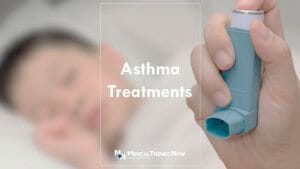
What Are The Causes Of Asthma?
Various irritants and chemicals that cause allergies (allergens) can cause asthma symptoms and indications to appear. Each person has distinct triggers for their asthma, which can include:
- Genetics – Some people are more likely to develop asthma because of their genes.
- Pollen – Many people with asthma have seasonal allergies triggered by pollen from trees, grasses, weeds, pets, or other animals.
- Dust mites – These tiny creatures can cause asthma in people with sensitive skin or an allergy to their dander (tiny bits of skin that Dust Mites leave behind).
- Environmental factors – Exposure to certain pollutants, such as smoke, fumes from cars and factories, and chemicals in furniture and building materials, can all trigger asthma symptoms in some people.
- Allergens – Certain things, such as dust mites or food items, can cause people with asthma to have allergies.
Others include:
- Poor air quality
- Tobacco smoking
- Exercise
- Stress
- Pets
- Other diseases
What are the triggers of asthma?
You can experience an asthma attack when you are exposed to “asthma triggers,” which can vary greatly from person to person. Recognize your triggers and figure out how to avoid them. When you are unable to evade your triggers, be on the lookout for an asthma attack. The following are some of the most typical triggers:
- Pollen, dust mites, mold spores, pet dander, and cockroach feces are examples of airborne allergens.
- Diseases of the respiratory system, including the common cold
- Physical exercise
- Icy air
- Air irritants and contaminants (e.g., smoke)
- Several pharmaceuticals (e.g., aspirin, beta-blockers, and nonsteroidal anti-inflammatory drugs (NSAIDs), such as ibuprofen and naproxen sodium, can cause stomach bleeding)
- Stress and intense feelings
- Shrimp, dried fruit, processed potatoes, beer, and wine are just a few examples of foods and beverages that have sulfites and preservatives added to them.
- Acids from your stomach might reflux into your throat, a condition is known as gastroesophageal reflux disease (GERD).
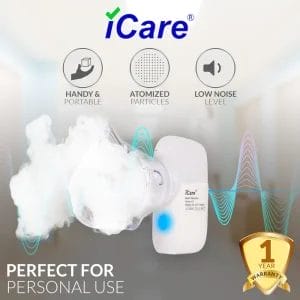
Symptoms Of Asthma
Most Filipino people with asthma experience some form of asthma symptoms at some point in their lives. Symptoms can vary from person to person, but they often include:
- Shortness of breath
- Wheezing
- Chest tightness
- Coughing
- Difficulty breathing
- Air passage blockages (known as an asthma attacks)
- Reducing airflow through the lungs
- Irritation and inflammation of the airways and surrounding tissues in the lungs (known as asthma syndrome)
- Fever
- Night sweats
- Fatigue
- Headache
- Drowsiness
- Gastrointestinal problems, such as nausea and vomiting, diarrhea, constipation, or acid reflux
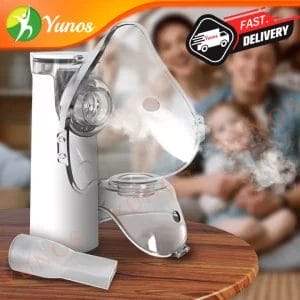
Risk Factors for developing asthma
Various variables are believed to raise your risk of acquiring asthma. They consist of:
- Having an asthmatic blood relative, such as a parent or sibling
- Having another allergic illness, such as hay fever, which causes runny noses, congestion, and itchy eyes, or atopic dermatitis, which causes red, itchy skin
- Excess weight
- Using tobacco
- Exposure to passive smoking
- Exposure to pollutants from other sources or exhaust fumes
- Exposure to work-related stimuli, such as manufacturing, farming, and hair-care chemicals
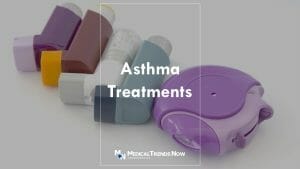
What Are The Complications Of Asthma?
Asthma can cause a number of complications, including shortness of breath, wheezing, chest tightness, coughing, difficulty breathing, and air passage blockages. In some cases, asthma can also lead to fever, night sweats, fatigue, headache, drowsiness, and gastrointestinal problems.
Others include:
- Symptoms that interfere with sleep, working, or doing other things
- Absences due to asthma attacks
- A condition where your bronchial tubes, which carry air to and from your lungs, permanently shorten, impairing your ability to breathe
- Severe asthma attacks that require hospitalization and emergency room visits
- Effects of several drugs used to stabilize severe asthma after long-term use
If you have asthma, it is important to be aware of these potential complications and seek medical help if you experience any of them.
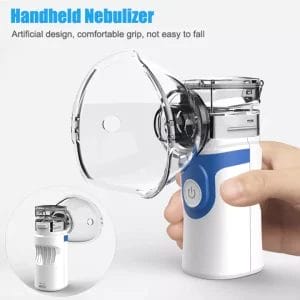
How Can I Prevent Asthma Attacks?
Although there is no known way to prevent asthma, you can create a step-by-step strategy with your Filipino doctor to manage the illness and prevent asthma symptoms to attack.
- Make a thorough strategy for taking medications and handling an asthma attack with the help of your Filipino doctor. Make sure to adhere to your plan.
- Asthma is a chronic illness that requires continual monitoring and care. Taking charge of your care may make you feel more in charge of your life.
- Get immunized against pneumonia and influenza. Keeping up with vaccines can stop the flu and pneumonia from causing asthma attacks.
- Allergens and irritants found outside, such as pollen, mold, cold air, and air pollution, can cause asthma attacks. Learn what triggers your asthma and take precautions to avoid those things.
- Be aware of your breathing. You might develop the ability to spot early symptoms of an attack, such as a light cough, wheezing, or shortness of breath.
- You’re less likely to get a serious attack if you respond promptly. You won’t require as much medication to manage your symptoms, either. Take your medication as directed when your peak flow readings drop and warn you of an impending attack. Stopping any behavior that might have caused the attack should also be made right away. Consult a Filipino doctor as instructed in your action plan if your symptoms don’t disappear.
- Even if your asthma improves, don’t switch drugs without consulting your Filipino doctor. Bring your medications with you to every Filipino doctor’s appointment. Your Filipino doctor can ensure you’re taking the right drug dosage and using it properly.
- Your asthma isn’t under control if you frequently go for your albuterol or other quick-relief inhalers. Consult your Filipino doctor about modifying your medication.
Avoidance of Triggers
Triggers of asthma may vary from person to person; by reducing the exposure to triggers, asthma attacks may be controlled and prevented.
- Utilize air-conditions.
- Decontaminate objects
- Uphold ideal humidity
- Help prevent asthma by removing molds and spores
- Regularly clean and disinfect the environment
- Reduce pet dandler
- If the weather is chilly, cover your mouth and nose.
![NUELIN Theophylline 125mg 1 Sustained Release Tablet [PRESCRIPTION REQUIRED] Watsons Pharmacy](https://e52hyu4yuyt.exactdn.com/wp-content/uploads/2023/01/NUELIN-Theophylline-125mg-1-Sustained-Release-Tablet-PRESCRIPTION-REQUIRED-Watsons-Pharmacy-300x300.webp?strip=all&lossy=1&ssl=1)
Diet For Asthma Prevention And Management
A healthy diet is an important part of managing and preventing asthma attacks. While there is no specific diet for asthma, some foods may help to reduce the severity of symptoms or the frequency of attacks. Fish and seafood are good sources of omega-3 fatty acids, which have been shown to reduce inflammation in the airways.
Others include:
- Whole grains
- Vegetables
- Fruits
- Snacks that are low in sugar and sodium
- Water, milk, and juice
Talk to your doctor in the Philippines about incorporating fish and seafood into your asthma management and prevention plan.
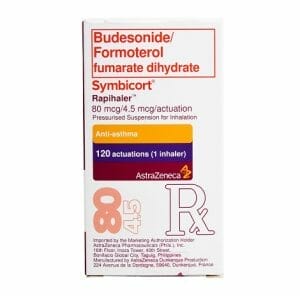
Other Tips For Asthma Prevention And Management
There are a few other things you can do to help manage and prevent asthma symptoms and attacks:
- Exercise regularly
- Avoid overexertion
- Asthma control with medication
- Monitor asthma symptoms and response to treatment
- Avoid smoke, fumes, and allergens
- Eat a balanced and healthy diet
- Avoid sulfites and preservatives
- Drink plenty of fluids
- Get enough sleep
- Avoid stress

What Are The Treatments For Asthma?
Your age, symptoms, asthma triggers, and what best controls your asthma will determine your best asthma medicines.
Medication used for long-term prevention and control lessens the inflammation that causes swelling in your airways and causes symptoms. Breathing is restricted by enlarged airways promptly opened by quick-relief rescue inhalers (bronchodilators). Medication for allergies is sometimes required.
1. Long-Term Asthma Medications
They are the cornerstone of asthma treatment and are often taken daily. These drugs lessen your risk of having an asthma attack and keep your asthma under control daily. Long-term control drug classes include:
- Leukotriene Modifiers
- Inhaled Corticosteroids
- Combination Inhalers
- Theophylline
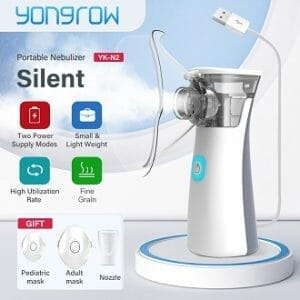
2. Rescue or Quick Relief Medications
As required, this provides quick, temporary symptom relief during an asthma attack. Additionally, if your doctor in the Philippines advises it, you can take them before working out. Some examples of quick-relief drugs are:
- Anticholinergic agents
- Short-acting beta agonists
- Oral and intravenous corticosteroids
An immediate-relief inhaler helps relieve your symptoms if you are experiencing an asthma attack. But if your long-term control meds are performing as intended, you shouldn’t need to use your quick-relief inhaler very frequently.
Record the number of puffs you use each week. Consult your doctor in the Philippines if you find that you need to use your quick-relief inhaler more frequently than is advised. You most likely need to change the dosage of your daily control prescription.
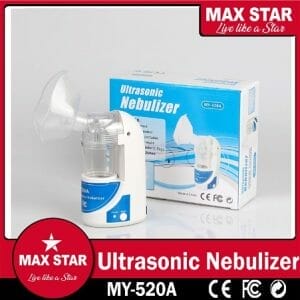
3. Medications for Allergy
- Allergy Shots or Immunotherapy
- Biologics
4. Bronchial Thermoplasty
Inhaled corticosteroids and other long-term asthma drugs do not treat severe asthma that responds to this therapy. Both its availability and suitability for everyone are limited.
The inside of the lungs’ airways is heated by an electrode during bronchial thermoplasty by your Filipino doctor. The smooth muscle lining the airways is reduced by heat. Asthma attacks may be less frequent if breathing is made simpler and the ability of the airways to constrict is limited. Three outpatient sessions are typically required for the therapy.
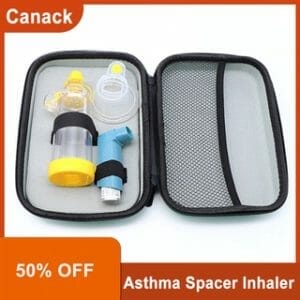
Homeopathic Remedies For Asthma Treatment
Homeopathic remedies are said to be a safe and effective treatment for asthma. Many homeopathic remedies are available, and each one is said to be effective for treating different symptoms. Homeopathic remedies are typically made from natural substances and are safe for most people to take. Some of the most popular homeopathic remedies for asthma include:
- Aconitum napellus: This remedy is said to be effective for treating symptoms that come on suddenly, such as shortness of breath, wheezing, and chest tightness.
- Antimonium tartaricum: This remedy is said to be effective for treating symptoms that are worse at night, such as cough, difficulty breathing, and air passage blockages.
- Arsenicum album: This remedy is said to be effective for treating worse symptoms in cold weather, such as reducing airflow through the lungs and irritation and inflammation of the airways.
- Bryonia alba: This remedy is said to be effective for treating symptoms that are worse with movement, such as exercise-induced asthma.
- Ipecacuanha: This remedy is said to be effective for treating symptoms worse with vomitings, such as nausea and vomiting.
More Information About Asthma Treatment In The Philippines
Below are the most frequently asked questions and topics regarding asthma among Filipinos.
Asthma Inhaler Effectiveness Among Filipinos
Asthma is an increasingly common condition in the Philippines, affecting more than 4 million people. Inhaled medications are often the first line of treatment for asthma and can help reduce and prevent symptoms flare-ups. The use of inhalers to treat asthma is becoming increasingly popular in the country due to their convenience and effectiveness.
Inhalers provide immediate relief from asthma symptoms by delivering medication directly into the lungs using a pressurized canister or nebulizer. Inhaled drugs are generally preferred over oral medications because they act quickly, providing relief within minutes rather than hours or days. They also have fewer side effects as most of the drug stays in the lungs instead of entering the bloodstream throughout your body. Some people may find that combining an inhaled medication with an oral one works best for them, depending on their individual needs and the severity of their condition.
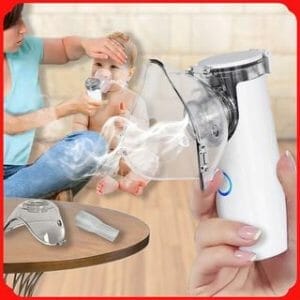
How To Create An Asthma Action Plan For Filipinos?
An asthma action plan is essential for Filipino patients to manage asthma symptoms better and help prevent flare-ups.
An asthma action plan outlines the steps to manage asthma symptoms and provides guidance on effectively using inhalers, medications, and other treatments. This plan allows individuals to recognize potential triggers and early signs of a flare-up so they can act quickly. Common treatments for asthma include bronchodilators, anti-inflammatory medications, peak flow meters (for monitoring airway obstruction), and allergen avoidance strategies such as using air filters or avoiding certain activities during the pollen season.
An action plan is an individualized document that outlines treatments and strategies to help manage asthma symptoms and prevent long-term complications. Developing an action plan involves working closely with your healthcare team to ensure you are receiving the best possible treatment and care.
An asthma action plan is designed to meet the needs of each patient based on their individual risk factors. It should provide information about triggers to avoid, medications that need to be taken, when and how much medication should be taken, and guidance on what steps should be taken if symptoms worsen or emergency medical attention is needed. Treatment plans will also often include guidance around lifestyle changes such as exercise, diet, and stress management that can help improve overall health and reduce flare-ups caused by allergies or environmental conditions.

Asthma Treatment: How Is Asthma Treated By Doctors In The Philippines?
Asthma can be treated with traditional and modern asthma treatments in the Philippines.
Traditional treatments for asthma include lifestyle changes such as avoiding triggers like dust, smoke, and strong odors; regular exercise; managing stress levels; and diet modifications to reduce inflammation. Herbs such as turmeric, ginger, garlic, oregano oil, eucalyptus oil, and licorice root have also been used in traditional remedies to help manage asthma symptoms.
Modern treatments for asthma usually involve medications prescribed by a Filipino doctor and other forms of therapy, such as pulmonary rehabilitation or biofeedback. These treatments focus on controlling inflammation in the airways and increasing airflow resistance during an attack.
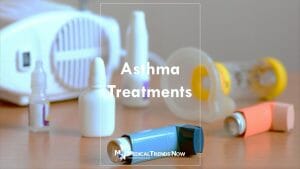
Asthma Medication
Asthma is a chronic condition that affects millions of people in the Philippines, requiring regular treatments and medications. One of the key treatments for asthma is taking prescribed medication as directed by a physician. Generally, two types of medications are generally used to treat asthma: quick-relief and long-term control medicines.
Quick relief medicines, such as albuterol, provide immediate relief from coughing and wheezing symptoms when taken on an as-needed basis. Long-term control medications are taken daily to reduce airway inflammation, leading to less frequent asthma attacks over time. Physicians may prescribe different combinations of short-acting and long-acting inhalers or oral medications depending on the severity of your disease.

What Is Asthma Attack?
An asthma attack is a condition that affects the airways, causing them to become inflamed and narrow. The most common symptom of an asthma attack is a difficulty breathing caused by constriction of the muscles in the chest wall and reduced airflow through narrowed airways. Asthma attacks can range from mild to severe and can occur suddenly or gradually over time.
In addition to difficulty breathing, other symptoms of an asthma attack may include wheezing, coughing, shortness of breath, tightness in the chest area, and a feeling of pressure around the chest area. People with asthma are more likely to experience an attack if they are exposed to triggers such as smoke, environmental pollutants, or allergens like pollen or pet dander. Treatment for an asthma attack typically involves medications such as bronchodilators that help open up constricted airways and reduce inflammation.
Asthma Symptoms Among Filipinos
In recent years, the number of Filipino asthmatics has continued to rise, making it important for Filipinos to recognize the signs and symptoms of this condition to seek timely treatment.
Common asthma symptoms include wheezing, coughing, shortness of breath, and chest tightness or pain. These symptoms tend to worsen during exercise or when exposed to certain environmental triggers such as pollen or pet dander. Additionally, asthma sufferers may experience fatigue due to difficulty sleeping caused by nighttime coughing or wheezing episodes.
What Is Severe Asthma?
Severe asthma is a life-threatening condition affecting millions of people worldwide. It is characterized by persistent, difficult-to-control symptoms such as shortness of breath and wheezing. Although it can occur at any age, severe asthma is more common among adults than children and can significantly impact the quality of life.
Fortunately, treatments are available to help patients manage their severe asthma symptoms. Inhaled corticosteroids are the most commonly prescribed medications to reduce inflammation in the airways and improve lung function. Other medications may be used depending on individual needs, including bronchodilators to open up narrowed airways or immunomodulators to reduce inflammation further. Allergy shots or surgery may be recommended in some cases for those with particularly serious cases.
Asthma Trigger
Asthma can be a dangerous and frightening condition, so it is important to recognize the triggers that can cause an attack. Asthma triggers are anything that causes your airways to become swollen or inflamed. These triggers vary from person to person and can include things like dust, pet dander, smoke, or exercise. Knowing what your asthma triggers are is essential to prevent an attack.
If you experience an asthma attack due to a trigger, treatments for asthma involve relieving symptoms by using medications such as bronchodilators and anti-inflammatories. In addition, your doctor in the Philippines may prescribe regular maintenance and emergency rescue medications depending on the severity of your asthma attacks.
Types Of Asthma
Asthma is divided into two main types: allergic and non-allergic (intrinsic) asthma. Each type has unique characteristics, affecting treatment options for those with the condition.
Allergic asthma, also known as extrinsic asthma, is triggered by allergens such as dust mites, pet dander, or pollen. Symptoms include coughing, wheezing, and difficulty breathing due to inflammation in the airways. Treatment plans typically involve allergen avoidance, immunotherapy (allergy shots), and medications such as anti-inflammatory drugs or bronchodilators to reduce symptoms when they occur.
On the other hand, non-allergic (intrinsic) asthma is not triggered by allergens and is often a chronic, ongoing problem. Symptoms are typically less severe but can include wheezing, coughing, difficulty breathing, and chest pain.
Can I Treat Asthma At Home?
Asthma is a condition that can drastically affect a person’s quality of life, making it difficult to breathe normally. While treatments are available from medical professionals, many people wonder if it is possible to treat asthma from home. Fortunately, there are ways to manage asthma symptoms and reduce flare-ups by utilizing certain natural remedies.
Some home remedies for asthmatics include lifestyle changes such as avoiding triggers like dust mites or cigarette smoke. Additionally, incorporating natural products such as garlic and honey into your diet can help with inflammation and chest congestion. Herbs like ginger and turmeric may also offer relief when ingested in tea or taken as supplements. In addition, using essential oils like eucalyptus oil can help open up the airways and make breathing easier during an attack.
Used To Treat Asthma
The most common treatment for asthma is taking the medication regularly. Two types of medications are used to treat asthma: short-acting bronchodilators and long-acting controller medications. Short-acting bronchodilators provide quick relief from asthma symptoms by opening up narrowed airways, while long-acting controller medications reduce inflammation and prevent future exacerbations.
How To Prevent Or Improve Asthma Condition?
For those Filipinos who suffer from asthma, finding treatments to prevent or improve asthma symptoms is essential for leading a healthy life.
There are several lifestyle changes that can help control your asthma symptoms and reduce the risk of an attack. These include avoiding triggers such as dust mites, pet dander, outdoor air pollution, strong odors or fragrances, smoke from cigarettes or fires, cold air, and physical activity. Additionally, improving indoor air quality by keeping your home free of dust and mold can be beneficial for reducing symptoms.
When it comes to treating asthma, medication is often prescribed by healthcare professionals depending on the severity of the condition. Inhalers containing corticosteroids and short-acting beta-2 agonists are some of the most common medications used to reduce inflammation and open up airways. Long-term control medicines such as leukotriene modifiers may also be prescribed for those with more severe symptoms. Other treatments include immunotherapy injections or allergy shots, which can reduce sensitivity to asthma triggers like dust mites or pet dander over time.
In addition to medication therapies, lifestyle changes can also be beneficial for managing asthma symptoms in the Philippines.

Best Way To Control Asthma
Asthma is a chronic condition that affects the lungs and airways, causing difficulty breathing. In the Philippines, asthma affects an estimated 1.5 million people. While there is no cure for asthma, proper treatment can help reduce symptoms and improve quality of life.
The primary objectives of treatments for asthma in the Philippines are to reduce inflammation in the airways, control flare-ups, minimize side effects from medications, and prevent long-term complications such as damage to the lungs or other organs. The most common treatments for asthma include inhaled corticosteroids, long-acting beta-agonists (LABAs), leukotriene modifiers, combination inhalers, and allergy avoidance strategies. The type of treatment prescribed will depend on factors such as age and disease severity; a physician should be consulted for an appropriate plan tailored to individual needs.
How Can Children Avoid Asthma?
There are numerous treatments for asthma available in the Philippines, including medication such as inhalers and nebulizers, as well as lifestyle modifications like avoiding triggers like smoke or dust mites. Regular exercise can also help improve respiratory function in children with asthma, providing an important part of managing symptoms. For those who need more intense treatment options, doctors in the Philippines may recommend Allergen Immunotherapy (AIT), which helps desensitize patients against allergic triggers associated with their persistent asthma attacks.
How Filipino Doctors Treat Severe Asthma?
Asthma is a chronic lung disease that can affect anyone regardless of age and gender. However, it is more prevalent in the Philippines than in other nations. Filipino doctors have been treating severe asthma cases for decades, with some of the most advanced treatments available. For those people with severe asthma attacks, treatment aims to reduce symptoms, prevent future attacks and provide long-term control.
Filipino doctors use a range of treatments for asthma, including inhaled corticosteroids and quick-relief inhalers. These medications help reduce inflammation in the airways, which helps to minimize symptoms associated with an attack, such as coughing and wheezing.
Additionally, many Filipinos are now turning to lifestyle changes such as avoiding triggers like dust mites and pet dander, exercising regularly, and maintaining a healthy diet as another way to help manage their condition.
Filipino Asthma Specialist In The Philippines
While medication is often considered the first line of treatment, consulting with an asthma specialist may also be beneficial for patients who are struggling to find relief.
An asthma specialist is a Filipino pulmonologist doctor specializing in managing this condition. They will assess a patient’s individual case before devising a plan tailored to their needs and lifestyle. This could include recommending lifestyle changes such as exercise or diet modifications and prescribing medications like inhaled corticosteroids or bronchodilators if needed. An asthma specialist may advise on environmental triggers like allergens or pollutants that could worsen symptoms and provide guidance on how best to avoid them.
Takeaway: Treatments For Asthma in the Philippines
There are many different ways to treat asthma; the best treatment will vary depending on the person’s symptoms and history. If you are experiencing asthma symptoms, you must speak with your doctor in the Philippines about the best treatment options.
Sources: Treatments For Asthma in the Philippines
- Asthma – Diagnosis and treatment – Mayo Clinic
- Learn How To Control Symptoms of Asthma | CDC
- Nighttime Symptoms of Asthma – GAAPP
- Reduce Asthma Triggers | American Lung Association
- Asthma: How to use your inhaler? – Mount Sinai
- Using an inhaler – CDC
- Long-term asthma control – HealthyChildren.org
- What is Nocturnal Asthma? | Sleep Foundation
- What are the four levels of asthma severity? – UPMC Children’s Hospital of Pittsburgh
- Dealing With an Asthma Flare-Up (for Teens) – Kids Health
- Asthma attacks and control symptoms – ACAAI
- What can help prevent asthma attacks – Blue Cross MN
- Health Corner – Rizal Medical Center – DOH
- How common is asthma in the Philippines? First Regular Session – Senate of the Philippines
- Asthma in Philippines – World Life Expectancy
- The number of reported asthma cases in the Philippines – eFOI
- Prevalence of asthma among Filipino adults based on the National Nutrition and Health Survey (NNHeS) – Philippine Journal of Internal Medicine
Disclaimer
This website is intended to educate both members of the general public and those working in the medical field on the prevalence, causes, and methods for preventing, diagnosing, and treating diseases that affect people throughout their lives. This website’s content is provided solely for informational reasons and is not meant to serve as a substitute for the advice of a qualified medical practitioner.


